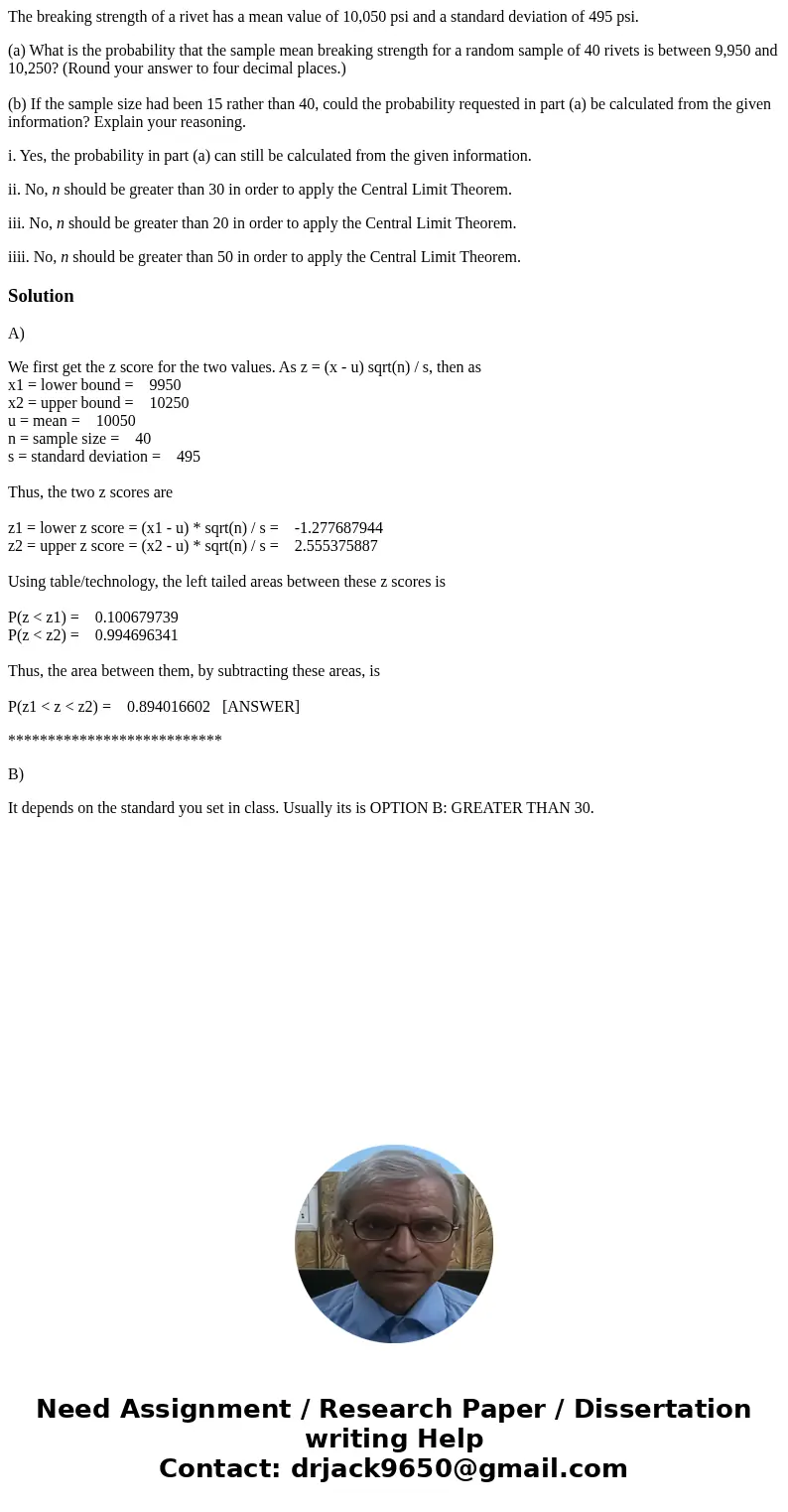The breaking strength of a rivet has a mean value of 10050 p
The breaking strength of a rivet has a mean value of 10,050 psi and a standard deviation of 495 psi.
(a) What is the probability that the sample mean breaking strength for a random sample of 40 rivets is between 9,950 and 10,250? (Round your answer to four decimal places.)
(b) If the sample size had been 15 rather than 40, could the probability requested in part (a) be calculated from the given information? Explain your reasoning.
i. Yes, the probability in part (a) can still be calculated from the given information.
ii. No, n should be greater than 30 in order to apply the Central Limit Theorem.
iii. No, n should be greater than 20 in order to apply the Central Limit Theorem.
iiii. No, n should be greater than 50 in order to apply the Central Limit Theorem.
Solution
A)
We first get the z score for the two values. As z = (x - u) sqrt(n) / s, then as
x1 = lower bound = 9950
x2 = upper bound = 10250
u = mean = 10050
n = sample size = 40
s = standard deviation = 495
Thus, the two z scores are
z1 = lower z score = (x1 - u) * sqrt(n) / s = -1.277687944
z2 = upper z score = (x2 - u) * sqrt(n) / s = 2.555375887
Using table/technology, the left tailed areas between these z scores is
P(z < z1) = 0.100679739
P(z < z2) = 0.994696341
Thus, the area between them, by subtracting these areas, is
P(z1 < z < z2) = 0.894016602 [ANSWER]
***************************
B)
It depends on the standard you set in class. Usually its is OPTION B: GREATER THAN 30.

 Homework Sourse
Homework Sourse